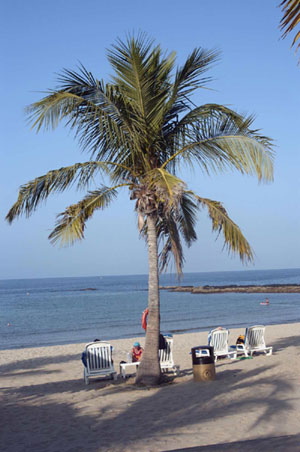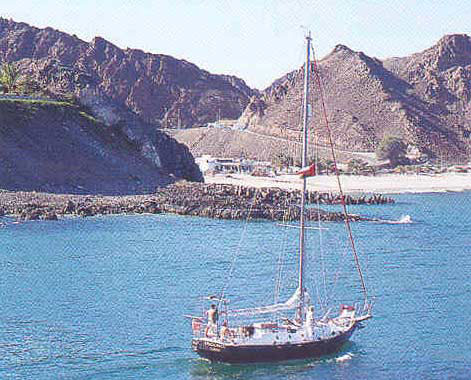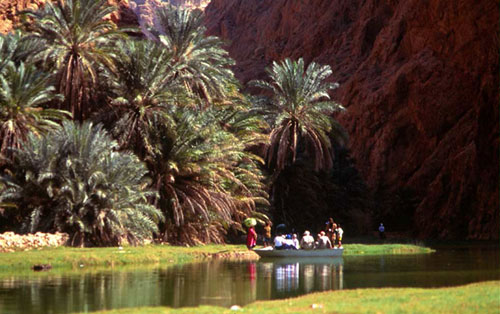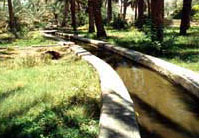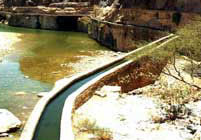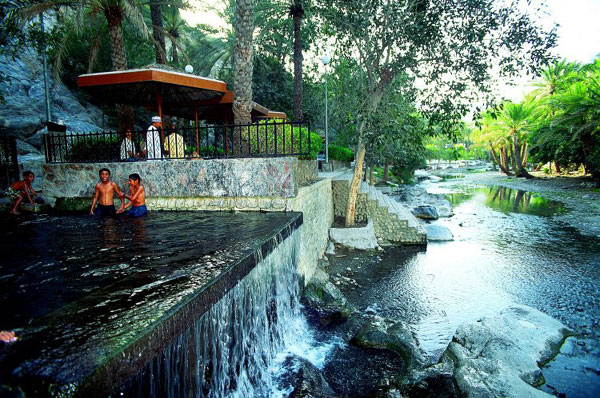Beaches
With a coastline of 1700km, Oman offers some of the cleanest, most stunning beaches a visitor could hope to see. Few beaches are private, except some attached to the beach resort hotels, or those adjoining military or official property. Weekend picnics and barbeques are popular on the beach. Many coves are perfect for snorkelling and with fairly gentle shelves, are good for children. Some of the beaches in the Muscat capital area include:
Aviation Beach, or Shell Beach,
Which is located near the Civil Aviation Club in Al Azaiba. A four-wheel drive vehicle is necessary to get down to the water's edge. It is abundant in starfish, crabs and exotic shells.
Qurum Beach
Qurum Beach, below the Crowne Plaza Hotel, is well set up for visitors and has a number of picnic areas and palm shades. When the tide is low, one can take a 4km walk towards the Embassies' area in Shati Al Qurum. Approximately half way along this stretch of beach is the Muscat InterContinental hotel. Around this area are many jetski rentals.
Bandar Jissah
Bandar Jissah is located near Qantab, on the way to Al Bustan. The bay is quite secluded and the rocks at the foot of the cliffs can be good for exploring when the tide is out. Snorkelling is popular here. There is also a children's playground and snack shop.
Marjan Beach
Marjan Beach, near Petroleum Development Oman (PDO), is quiet during the day, but tends to get livelier in the early evenings. It has some small coral reefs, perfect for the novice snorkeller, as one doesn't have to swim too far out before seeing the likes of clown fish, parrot fish, sea cucumbers and occasionally, turtles and rays. Local fishermen can be seen spearing cuttlefish.
Wadis
A wadi is a dried up riverbed found in the mountain valleys. Wadis come into their own after heavy rains, when the rivers start running again and the vegetation is restored. However, some wadis have year-round running water, with deep, cool pools in which it is quite safe to swim if the currents are slow. On the whole, wadis are only accessible with a four-wheel drive vehicle, as the terrain can be extremely bumpy. Wadis are green, lush oases of palm trees, grasses, and flowering shrubs. The villagers often take their cars down for washing and groups of people have great fun splashing around in the clean water. It is always safest to visit wadis in a group or with a tour guide. Although they are beautiful places, they are often remote and car breakdowns can happen to anyone. Visitors must also be on the alert for rain clouds, as sudden downpours can lead to flash floods, which are highly dangerous when in the gorges.
The Falaj system and water Springs
Falaj (pl. aflaaj)
means a system for the distribution of water and is commonly used to describe the irrigation channel system downstream of the water's source.
Some aflaaj in Oman were built more than 1,500 years ago, whilst others were built at the beginning of the 20th century. The genius of the Omani builders is evident in the way they tunnelled into the ground to a depth of dozens of metres in order to gain access to the groundwater. These channels were truly a miracle of engineering at a time when mechanical equipment was not available.
Aflaaj can be divided into 3 types:
• The da'ndi - these are long tunnels (qanat) dug into the ground up to depths of dozens of metres and extendin for several kilometres. The water flows continuously all the year round. The course of a qanat is marked by the series of access holes used in tunnelling. The access holes are left open after tunnelling as inspection vents.
• The aini - these derive water from a sprin , including a hot spring.
• The ghiayl - a channel tapping a flow in the upper gravels of a wadi.
There are now over 4,000 aflaaj scattered throughout the Sultanate, with the highest concentration in Sohar.
When the falaj waters reach the population, the inhabitants draw off their needs and the rest is distributed to agricultural plots according to an exact system of apportioning the hours of the day under the supervision of an elected member of the community. A proportion of the agricultural harvest is allocated as a contribution towards the upkeep of the aflaaj and irrigation ditches.
Since the 1970's the government has taken steps to maintain this precious heritage by restoring aflaa7, and making them more efficient by digging support wells and ensuring an optimum use of water by introducing modern irrigation systems.
SPRINGS
There are hot and cold springs in several areas of the country. The best known hot springs are in Rustaq and Nahkl, whilst the most beautiful cold spring is Ain Razat in Salalah.
